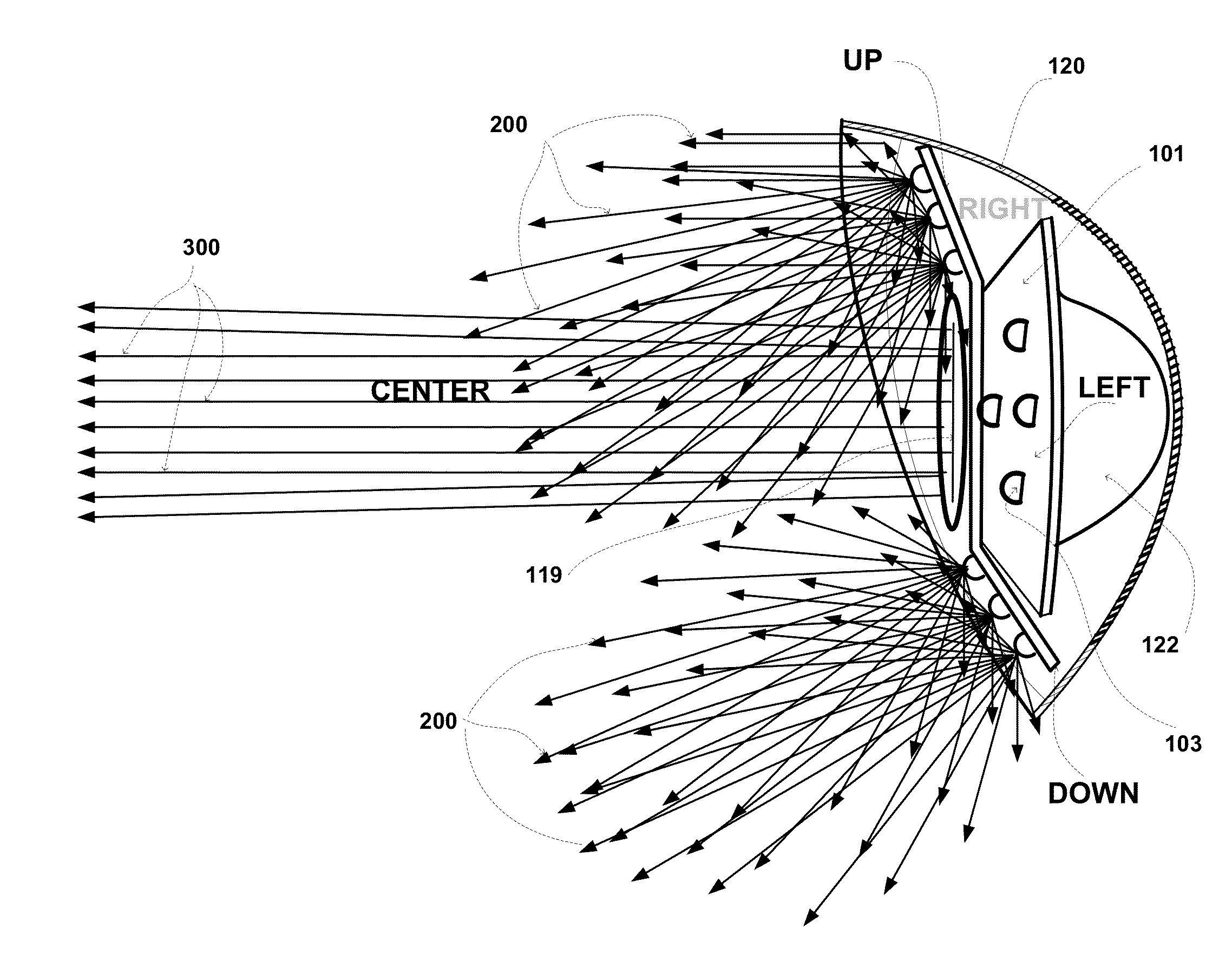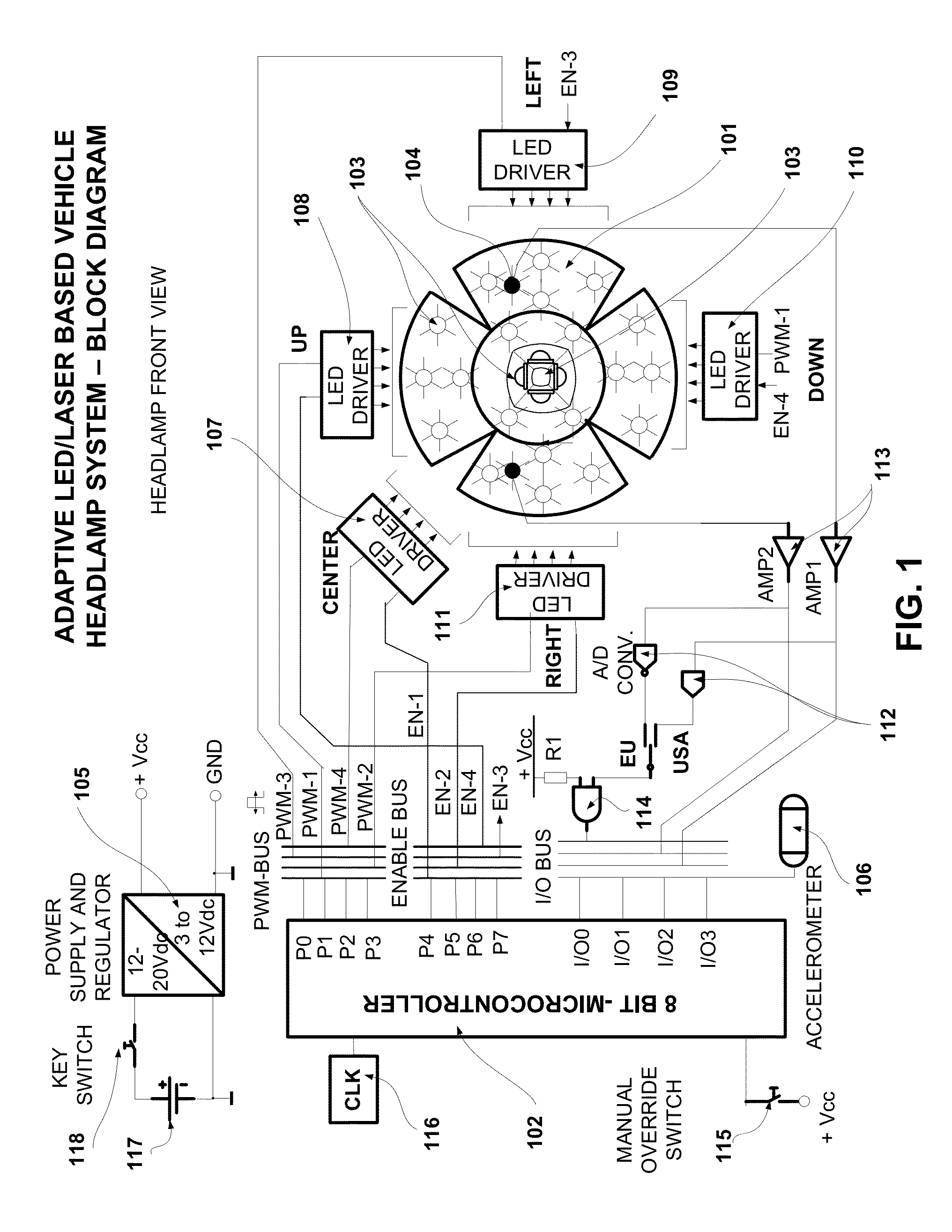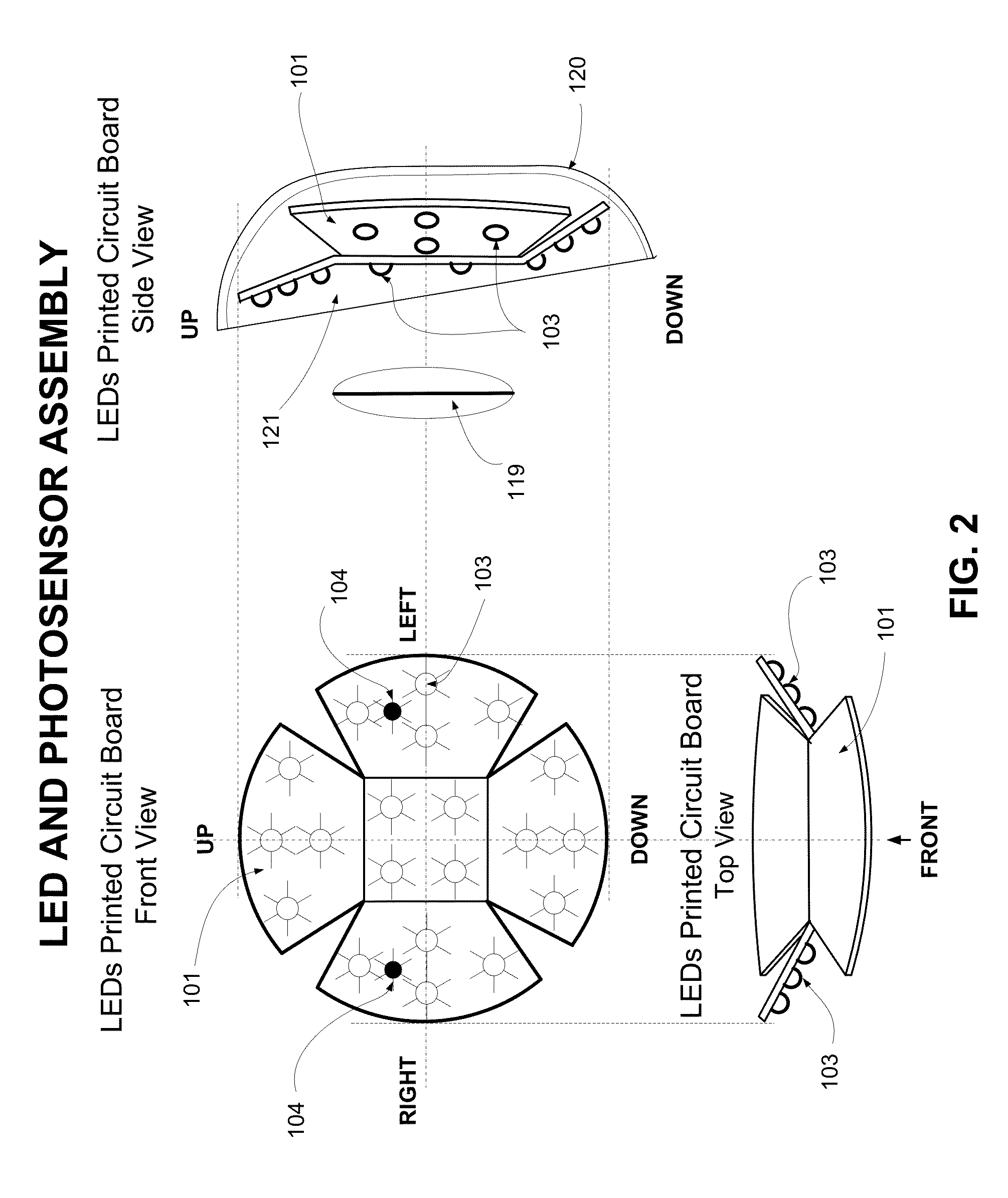Adaptive external vehicle illumination system
a technology for external vehicles and illumination systems, applied in lighting and heating apparatus, transportation and packaging, lighting support devices, etc., can solve problems such as back-dazzle and traffic blinding effects, and achieve the effects of reducing glare, enhancing light efficacy, and enhancing the quality of all-over illumination
- Summary
- Abstract
- Description
- Claims
- Application Information
AI Technical Summary
Benefits of technology
Problems solved by technology
Method used
Image
Examples
Embodiment Construction
[0017]Constructive and Functional Objectives Pursued and Implemented by this Application
[0018]The main constructive and functional objectives of this application for which the claims are made, are enumerated below:[0019]a) To create a single physical asymmetric-geometry body containing the automatic light emitting system LEDs / Laser, built as a headlamp assembly which is applicable to any type of vehicle (terrestrial, nautical or airborne) and providing for all the front illumination, direction signaling lights, distress signaling and also providing rear-end signaling and reverse driving light controls,[0020]b) To automatically control the headlamp light intensity and direction in order to create an adaptive illumination system which responds to the environment illumination conditions, to produce a constant and uniform selective omnidirectional illumination over the whole scene ahead without high contrast zones or penumbra for increased visibility, reduced fatigue and to facilitate a...
PUM
 Login to View More
Login to View More Abstract
Description
Claims
Application Information
 Login to View More
Login to View More - R&D
- Intellectual Property
- Life Sciences
- Materials
- Tech Scout
- Unparalleled Data Quality
- Higher Quality Content
- 60% Fewer Hallucinations
Browse by: Latest US Patents, China's latest patents, Technical Efficacy Thesaurus, Application Domain, Technology Topic, Popular Technical Reports.
© 2025 PatSnap. All rights reserved.Legal|Privacy policy|Modern Slavery Act Transparency Statement|Sitemap|About US| Contact US: help@patsnap.com



